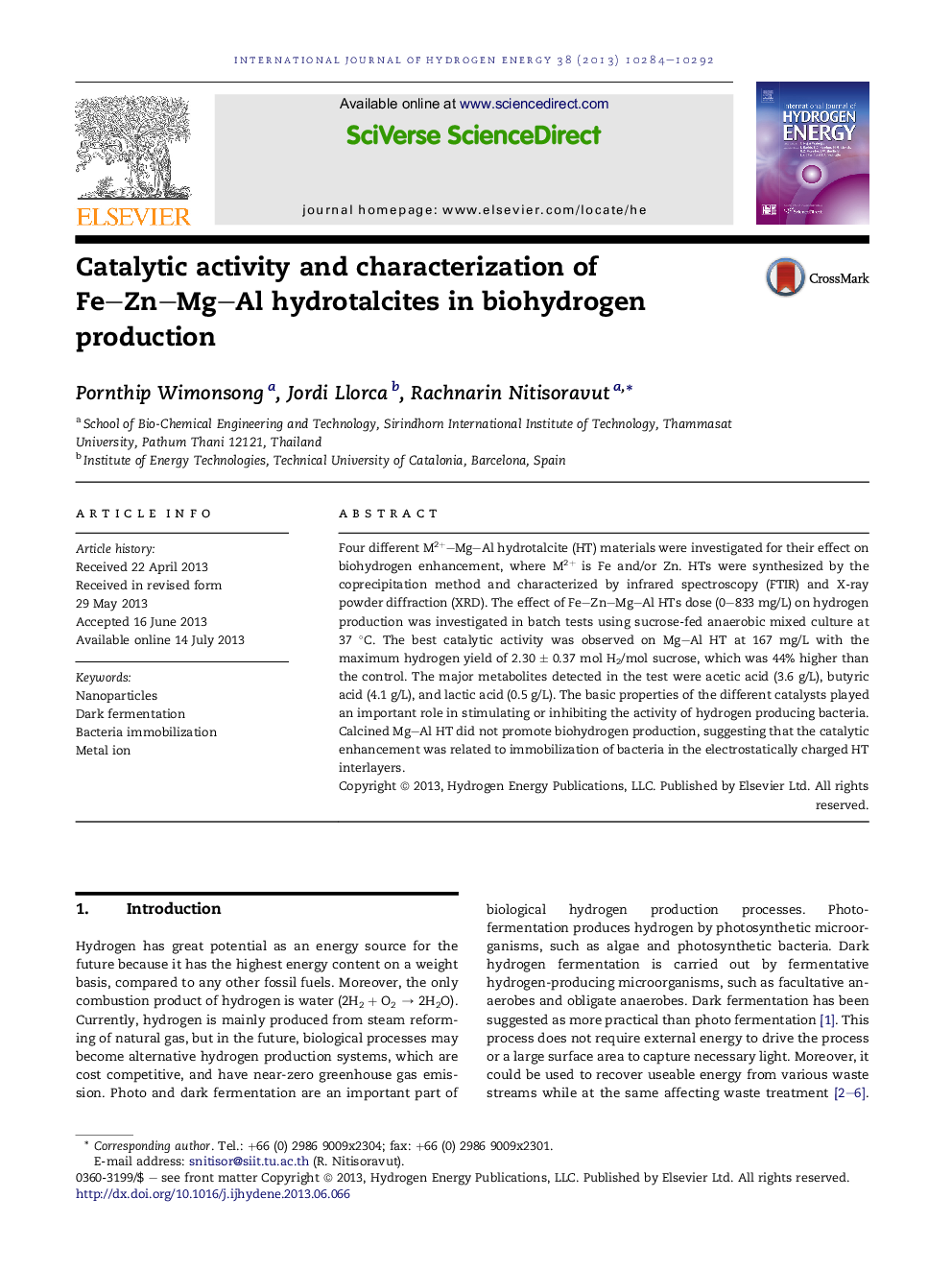| Article ID | Journal | Published Year | Pages | File Type |
|---|---|---|---|---|
| 7722059 | International Journal of Hydrogen Energy | 2013 | 9 Pages |
Abstract
Four different M2+-Mg-Al hydrotalcite (HT) materials were investigated for their effect on biohydrogen enhancement, where M2+ is Fe and/or Zn. HTs were synthesized by the coprecipitation method and characterized by infrared spectroscopy (FTIR) and X-ray powder diffraction (XRD). The effect of Fe-Zn-Mg-Al HTs dose (0-833 mg/L) on hydrogen production was investigated in batch tests using sucrose-fed anaerobic mixed culture at 37 °C. The best catalytic activity was observed on Mg-Al HT at 167 mg/L with the maximum hydrogen yield of 2.30 ± 0.37 mol H2/mol sucrose, which was 44% higher than the control. The major metabolites detected in the test were acetic acid (3.6 g/L), butyric acid (4.1 g/L), and lactic acid (0.5 g/L). The basic properties of the different catalysts played an important role in stimulating or inhibiting the activity of hydrogen producing bacteria. Calcined Mg-Al HT did not promote biohydrogen production, suggesting that the catalytic enhancement was related to immobilization of bacteria in the electrostatically charged HT interlayers.
Related Topics
Physical Sciences and Engineering
Chemistry
Electrochemistry
Authors
Pornthip Wimonsong, Jordi Llorca, Rachnarin Nitisoravut,
